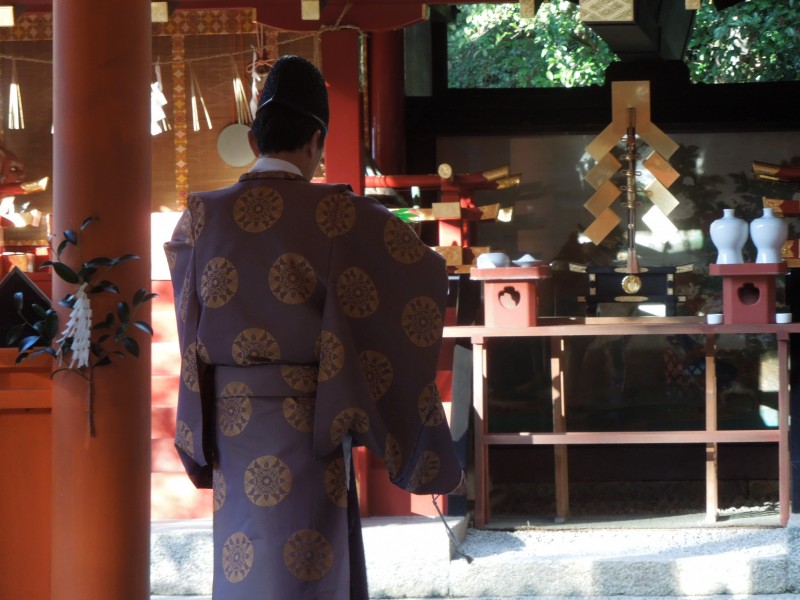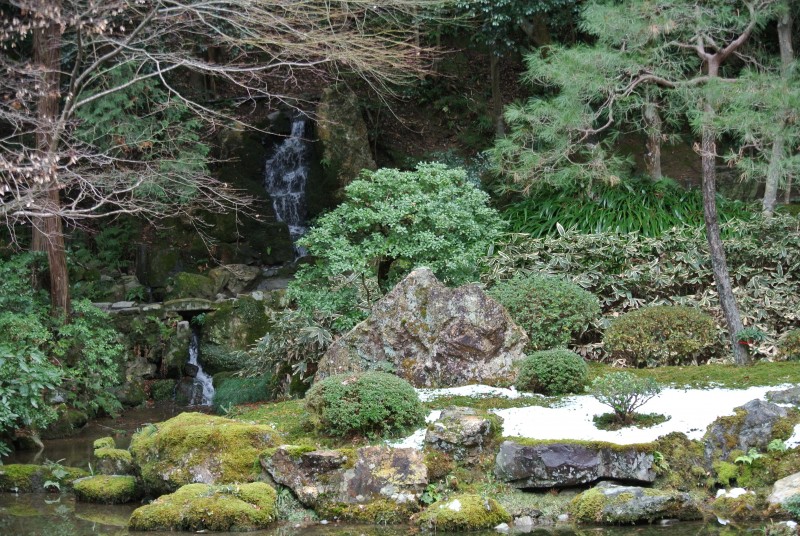
Rituals at Shinto shrines are for ancestral or animist spirits
Green Shinto has written before of how Shinto stands on the twin pillars of animism and ancestor worship, and how these two different strands are interlocked. (See here for instance.) Zen too cultivates both aspects, though they are not so central to its practice. Perhaps the influence of Shinto brought out the tendencies in the imported religion.
In an essay in Treasury of the True Dharma Eye entitled ‘The sound of the valley stream, the colors of the mountain’, Dogen, the founder of the Soto sect wrote as follows:
The sound of the valley stream, the colors of the valley stream, the sound of the mountain, and the colors of the mountain all reveal truth unstintingly. If you do not prize honor and gain, then the valley stream and the mountain will expound truth to you without stint.
“The sound of the stream, the colour of the mountain…”
Dogen advocated recalling nature internally and searching out ways to live according to the laws of nature. It all sounds very similar to the thinking of Shinto and cold water austerity (misgoi) as a way to immerse oneself in nature and so be true to one’s real self.
Along with the reverence of nature goes reverence for ancestors. In Shinto this begins on a personal level with maintenance of the memory of one’s parents and grandparents, and then extends to the larger anonymous mass of ancestors that goes to make up the whole inherited past of the nation.
Similarly in Zen there is a concern with maintaining the spirit-memory of one’s teachers, both one’s own teacher and the whole line of transmission back to the founder of the sect, and beyond that to the founder of Zen, and beyond that to the historical and other Buddhas. The pamphlet of the subtemple of Ryogen-in at Daitoku-ji states the following about the images of founders Rinzai and the subtemple founder Tokei:
We attend to them as if they are still here, and we hold fast to the first teaching of Zen Buddhism, ‘hoon shatoku’ (display gratitude for the kindness and virtue shown to you).
Attending to ancestral spirits as if they are still here – you could hardly get a better description of kami. Displaying gratitude for what you have received is a key Shinto virtue too. Here then is a strong overlap in the mindsets of Zen and Shinto – unseen spirits in a living universe.

The Zen garden abstracts the quintessence of nature as a means to bring the practitioner closer to enlightenment


Leave a Reply